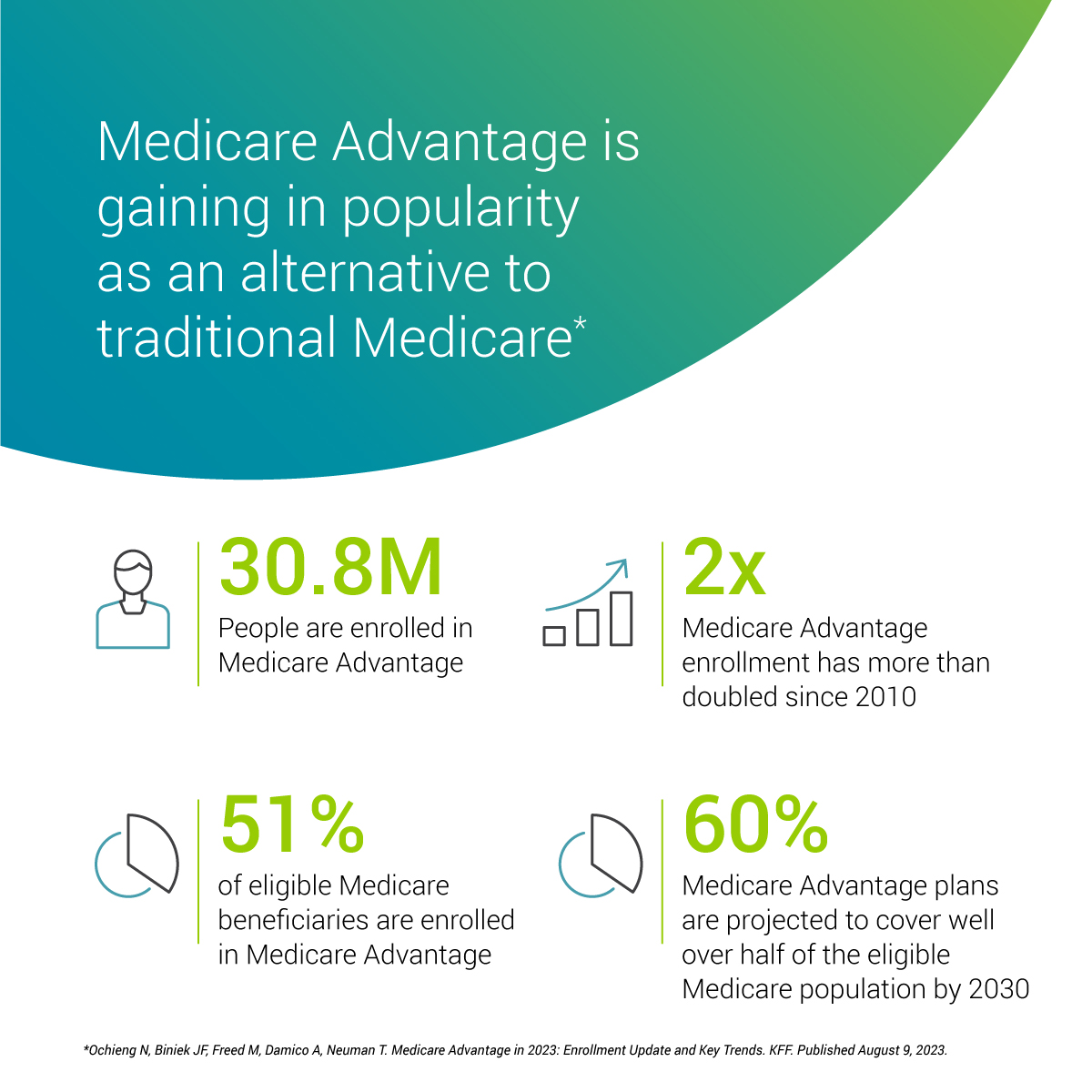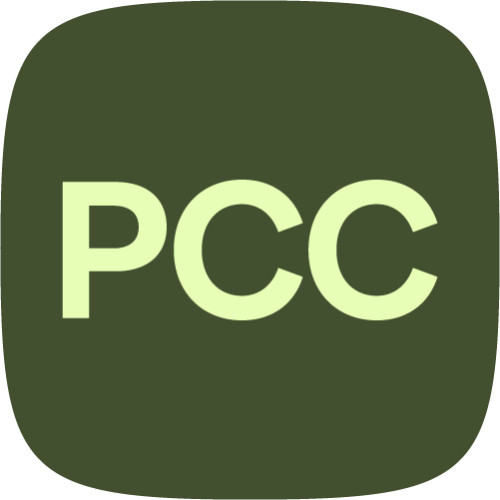Medicare Advantage (MA) plans are integral to the healthcare of our aging population, offering Medicare benefits through private entities and emphasizing incentives that prioritize patient health. Now encompassing 30.8 million people or 51% of Medicare’s eligible beneficiaries and 54% of federal Medicare spend,1 MA plans present a comprehensive approach to health coverage.
MA plans are at the forefront of the shift toward value-based care (VBC), a model that underscores patient outcomes, quality of care, and cost efficiency. In this model, incentives within MA plans are structured specifically to reward plans and providers for improving patient health and achieving superior care quality metrics.
MA plan incentives encourage practices that support VBC, decrease costs, and encourage enrollment in MA programs. As MA incentives evolve, they mirror the healthcare sector’s dedication to innovation and improved patient care. The significance of these incentives is set to grow, underlining their importance in the ongoing development of healthcare strategies.

Understanding Incentives and Rewards in MA Plans
Incentives and rewards in MA plans are multifaceted and designed to benefit all stakeholders in the healthcare continuum. For plans, these incentives often translate into higher enrollment and member satisfaction. For providers, they align payment structures with the quality of care delivered, and for patients, they mean access to a wider range of services and potentially lower costs.
MA rewards can vary by plan, incentivizing members to engage in healthy behaviors and preventative care practices. Rewards may include extra benefits such as fitness programs, dental, vision, and hearing care. As the healthcare industry has progressed, these incentives have been refined, with the Medicare Advantage landscape in 2023 reflecting a sophisticated array of rewards that encourage member engagement in their care.
The Impact of Incentives on Membership and Plan Enrollment
The growth in MA plan enrollment is in part due to the compelling incentives they offer. In 2023, the Medicare Advantage program rewarded up to $460 in gift cards or bonus payments to members for completing eligible health activities.2 In 2024, beneficiaries are attracted to plans that offer reduced co-payments, supplemental benefits, and even reductions or “givebacks” in Part B premiums, with 19% of plans providing some level of premium reduction.3 Moreover, the increasing prevalence of $0 monthly premium plans and low-cost prescription drug coverage reflects how innovative incentives are effective in drawing new members.3 These strategic incentives align with the growing demand for plans that offer more than basic healthcare coverage and address broader health determinants.
Financial Incentives Based on Quality Metrics
The financial framework of MA plans is closely tied to quality metrics set by the Centers for Medicare & Medicaid Services (CMS). The Quality Bonus Program (QBP) underscores this connection, using a star rating system to incentivize high-quality care delivery. Plans with higher star ratings, indicative of superior performance, receive greater benchmarks and rebate percentages. For example, MA contracts with ratings of 4 stars or higher are rewarded with a 5% bonus to their benchmark,2 allowing them to reinvest in additional benefits like enhanced vision, hearing, dental services, or innovative care models. This performance-based financial model has been a significant driver of federal investment in MA quality improvement, with bonus payments reaching at least $12.8 billion in 2023.2
Aligning Incentives with Providers and Members
The alignment of incentives between the CMS and MA plans hinges on quality care metrics. CMS incentivizes MA plans by setting benchmarks that are influenced by the plan’s performance on these metrics. In turn, MA plans extend these incentives to their network of providers, often tying compensation to the achievement of specified care standards. This may include enhanced support for adopting best practices and potential financial bonuses for delivering high-quality care that aligns with VBC objectives.
MA plans also directly engage members by extending incentives to them, fostering health and wellness. These member-focused incentives include access to wellness programs, gym memberships, and other health-promoting benefits. By integrating such offerings, MA plans not only encourage a proactive approach to health management but also align member interests with the overarching goal of improved health outcomes and care quality. These incentives serve as a tangible reflection of the plans’ commitment to the well-being of their members, contributing to the satisfaction and health of the broader Medicare Advantage population.

Impact of Advanced Technology on Incentives for MA Plans
The relationship between technology and incentives in MA plans is pivotal when it comes to quality metrics and Star Ratings. Advanced technologies play a crucial role in the ability of MA plans to meet care quality benchmarks. Improved data sharing and interoperability, facilitated by these technologies, enable MA plans to enhance patient outcomes, foster better care coordination, and promote preventative health measures, improving HEDIS scores and Star Ratings. The higher quality ratings not only enhance the plan’s attractiveness to potential enrollees but also bring financial bonuses from CMS, catalyzing ongoing technological adoption.
This means integrating sophisticated solutions with the following capabilities:
- A fully-connected healthcare ecosystem
- Visibility into member activity through real-time Admission, Discharge and Transfer (ADT) data
- Advanced analytics to support informed decision-making and patient health management
- Automated notifications and alerts to support proactive interventions and close time-sensitive care gaps
- HEDIS specifications to streamline provider performance monitoring and comprehensive reporting
- Transitions of care (TRC) support for post-hospitalization collaboration, reporting and medication reconciliation
Leveraging advanced solutions streamlines the operations of MA plans, leading to cost savings. While these are not directly incentivized by CMS, they contribute to a plan’s bottom line by streamlining data management and reducing administrative overhead. Efficient technology use means less time spent on administrative tasks and more accurate tracking of how well the plan meets healthcare quality measures. By meeting or exceeding the government’s expectations for patient care, plans further bolster financial performance through incentives and bonuses.
Conclusion
The strategic alignment of incentives within the MA ecosystem is fundamental to advancing patient health, care quality, and overall plan performance. These incentives, which are intricately linked to the use of advanced technology, have proven to be a driving force in the healthcare industry, fostering innovation and responsiveness to the evolving needs of the population.
Ready to Get Started?
Tackling the complexity of MA incentives means embracing technology that can address the multifaceted demands of quality healthcare. That’s where PointClickCare comes into play, armed with modern-day solutions designed to improve health plan quality metrics and the health outcomes of those you serve.
- https://www.kff.org/medicare/issue-brief/medicare-advantage-in-2023-enrollment-update-and-key-trends
- https://www.kff.org/medicare/issue-brief/spending-on-medicare-advantage-quality-bonus-payments-will-reach-at-least-12-8-billion-in-2023/
- https://healthpayerintelligence.com/news/what-are-major-payers-offering-medicare-advantage-members-in-2024







